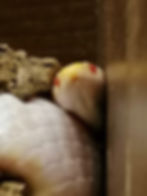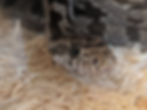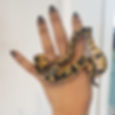Not So Scary Animals: Ophidiophobia
- Dane
- Jun 18, 2020
- 3 min read
Updated: Jul 18, 2025

At ZooLab, our Rangers meet people of all ages with phobias of one or more of our creatures. Over the past few months, Jessica examined some of the most common animal fears that we encounter to debunk the myths and help you see our extraordinary creatures in a whole new light.
Can a phobia be cured?
Yes! According to the NHS most phobias can be successfully treated or cured. We help many people each year overcome phobias - our team members will tell you it is one of their favourite and most rewarding part of the job. ZooLab workshops allow people to address fears through meeting and learning about these creatures. Rangers can help to ease phobias by answering questions and tackling common misconceptions.
However, treating a more complex phobia and intense fear may require counselling or cognitive behavioural therapy CBT.

This month's phobia: Ophidiophobia
Ophidiophobia is the irrational fear of snakes. It is actually more common than you may think - experts believe that as many as 1/3 of adults could be ophidiophobic. For some, a bad past experience could be partly to blame. However, our Rangers often find that the most common reason for acute snake phobias is the lack of knowledge about our scaly friends. Let's discuss below...

So what is it about snakes?
Is it a primitive protection mechanism? Could we be born with this ophidiophobia ? Possibly. While many scientists agree that our response is evolutionary - it is debated when this begins. A study from anthropologists at University of California suggests that in order to survive, our ancestors adapted to recognise and respond quickly to snakes. While studies agree that humans have a predisposition to detect snakes, many argue that children are not born with fear. Rutgers University, New Jersey showed babies videos of snakes monitoring startle response and heart rate - both of which were actually lower when our slithery friends were present, indicating that the babies were not scared.
Did you know? The fork in a snakes tongue is incredibly important! Snakes use their tongue to sense chemicals in the air - helping them to tell what direction a ‘smell’ is coming from.
Is it because they are a bit different? It is human nature to be wary of things that are a little different. Snakes look different, move differently and feel different. Why is this? Snakes have evolved to use their 15,000 muscles and 400 bones for slithering around their environment, wrapping around branches and moving away from predators.
Myths Busted - Snakes aren't slimy or wet to the touch, it is just how their scales make them look. They shed their skin every six to seven weeks.

Is it because they are venomous? There are 3,400 distinct species of snakes around the world - only 600 are venomous and of which 200 (6%) deadly to humans. None of the three species of snake native to the UK - adder, barred grass snake and smooth snake - are deadly to humans and will shy away from human interaction.
Unlike Boudicca, who loves a cuddle in front of the fire.

Did you know? Snakes are cold-blooded, ectothermic creatures - they relay on an external source to control their temperature i.e the sun.

Myths busted! Snakes do not crawl into beds with humans to size them up for food - honest!
Is it because their reputation? Snakes have been depicted as evil throughout centuries of human history. In Greek mythology, Medusa was a monster with living venomous snakes in place of hair. The snake in the Garden of Eden shows cunning in its deception of Adam and Eve. In modern pop culture and movies such as ‘Harry Potter’, ‘Snakes on a Plane’ and ‘Indiana Jones’ snake portrayals haven't changed. It's understandable that people develop ophidiophobia from media depictions.

Food for thought? Let's change the rhetoric here as snakes are amazing creatures who are unfairly judged. Other countries appreciate the value of serpents: i.e. in Chinese culture the snake symbolises good luck, excellent harvests and reproduction. Snakes are vital to the ecosystem - remember, everything has a job to do - without them the areas they inhabit would be overrun with rodents. In doing so, they reduce the spread of Lyme's disease and other tick borne diseases and aid farmers by preying upon pests that damage crops. They help to save the lives of humans; venom can be used in treatments for cancer, pain, high blood pressure, heart attacks, strokes, Alzheimer's and Parkinson’s. Engineers are also studying them to inspire the design of search and rescue robots - yet another way that they will be saving humans.
Our ZooLab animals are all amazing - I hope that we have perhaps changed your mind about the creatures that we have discussed on the blog over the last few months.
